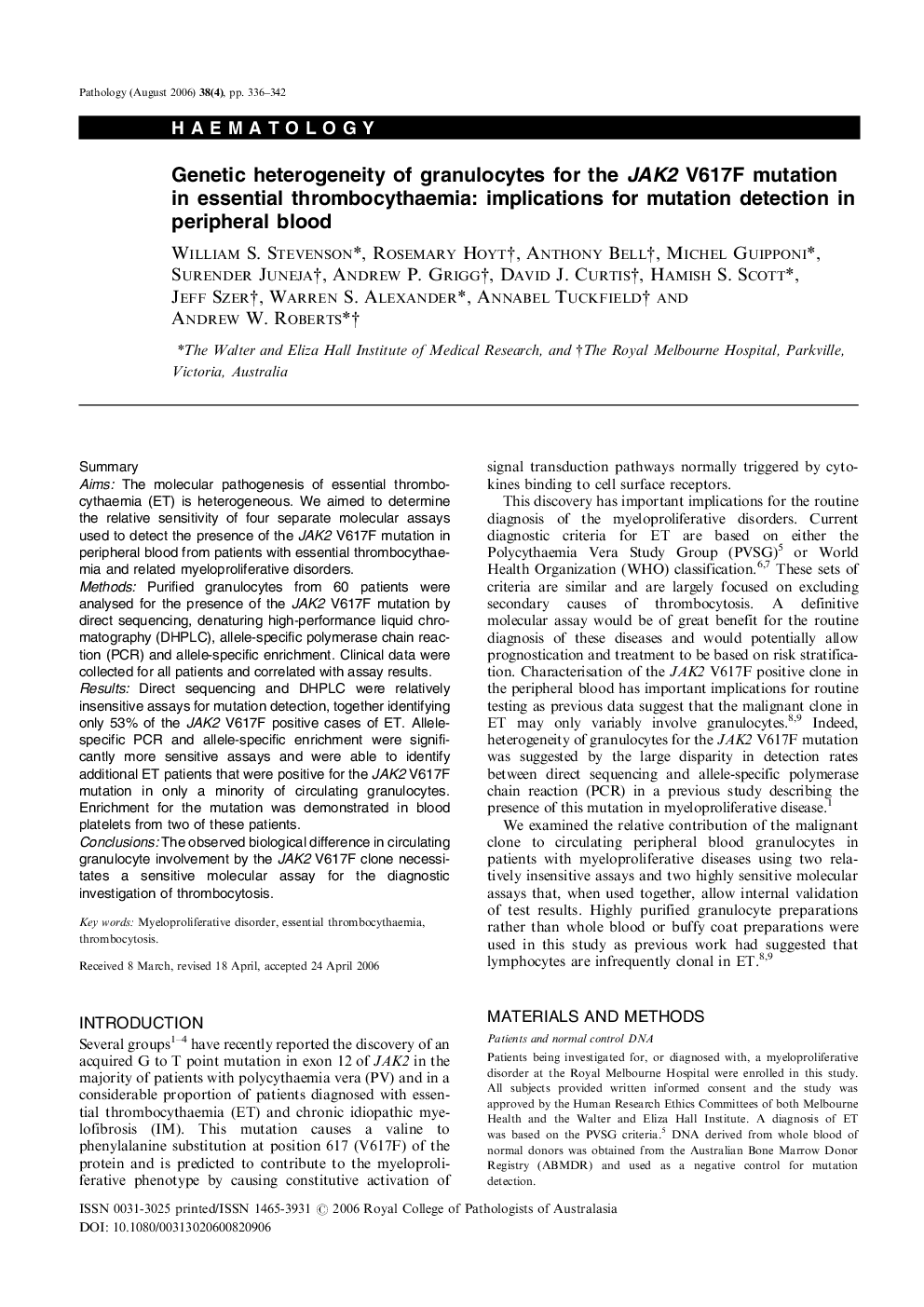| Article ID | Journal | Published Year | Pages | File Type |
|---|---|---|---|---|
| 106392 | Pathology | 2006 | 7 Pages |
SummaryAimsThe molecular pathogenesis of essential thrombocythaemia (ET) is heterogeneous. We aimed to determine the relative sensitivity of four separate molecular assays used to detect the presence of the JAK2 V617F mutation in peripheral blood from patients with essential thrombocythaemia and related myeloproliferative disorders.MethodsPurified granulocytes from 60 patients were analysed for the presence of the JAK2 V617F mutation by direct sequencing, denaturing high-performance liquid chromatography (DHPLC), allele-specific polymerase chain reaction (PCR) and allele-specific enrichment. Clinical data were collected for all patients and correlated with assay results.ResultsDirect sequencing and DHPLC were relatively insensitive assays for mutation detection, together identifying only 53% of the JAK2 V617F positive cases of ET. Allele- specific PCR and allele-specific enrichment were significantly more sensitive assays and were able to identify additional ET patients that were positive for the JAK2 V617F mutation in only a minority of circulating granulocytes. Enrichment for the mutation was demonstrated in blood platelets from two of these patients.Conclusions: The observed biological difference in circulating granulocyte involvement by the JAK2 V617F clone necessitates a sensitive molecular assay for the diagnostic investigation of thrombocytosis.
